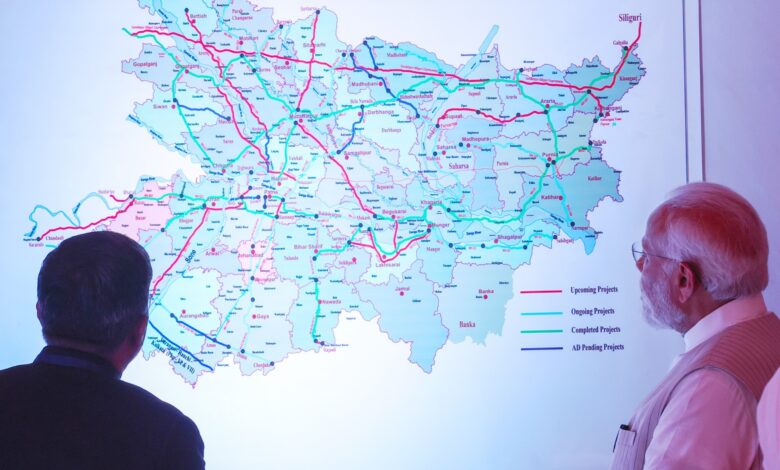Bihar and Uttar Pradesh need bigger allocations from Central funds
The economic and SDG data underscore the urgent need for targeted development efforts in UP and Bihar

By TV Mohandas Pai and Nisha Holla
Uttar Pradesh and Bihar are two of India’s most populous states, with estimated populations of 23.8 crore and 12.8 crore (17% and 9% of the national population) respectively. These figures are projected to rise significantly by 2036, contributing 34% of India’s total population increase.
UP is fifth in terms of state economic output with a Rs 23.61 trillion GDP. However, on a per-capita basis, it is on the lower end at Rs 99,188, only above Bihar (Rs 66,896) — a consequence of inferior planning and historical bad governance. India’s per capita GDP is Rs 210,856 — three times that of Bihar and double of UP. UP and Bihar together contribute only 11% to national GDP.
The figures shift dramatically if we exclude the two states. The remaining Indian population of 103.4 crore would account for a Rs 263.1 trillion GDP, resulting in a significantly higher per capita GDP of Rs 254,689. This stark Rs 43,833 per capita difference underscores the critical importance of developing UP and Bihar.
In meeting the sustainable development goals (SDGs) as well, a state-wise analysis highlights ongoing regional disparities despite India’s commendable overall progress to this end. NITI Aayog’s SDG India Index 2023-24 shows UP and Bihar ranked at the lower end across several parameters, well below the all-India average in critical areas.
Bihar consistently ranks at the lower end across parameters, significantly trailing the all-India average in almost all areas, particularly in SDGs 1 (no poverty), 2 (zero hunger), 3 (good health and well-being), 4 (quality education), 5 (gender equality), 8 (decent work and economic growth), 9 (industry, innovation, and infrastructure), and 10 (reduced inequality). These deficiencies noticeably drag down the overall performance of the country and highlight the urgent need for targeted development interventions in Bihar.
UP, while scoring lower than the national average in SDGs 1, 2, 3, 4, and 5, has shown significant strides in recent years. Particularly in SDG 10, UP has demonstrated a remarkable increase from 41 in 2020-21 to 66 in 2023-24. This progress, along with decent improvements in SDGs 1 and 2, indicates that certain sectors are moving in the right direction. However, it also emphasises the need for continued efforts to lift overall performance and achieve parity with national standards.
The economic and SDG data underscore the urgent need for targeted development efforts in UP and Bihar. Given the demographics and projected population, it is crucial to address their lagging performance on key indicators such as hunger, poverty, health, and education. By 2036, both these states will have the lowest median ages in the country — 19.9 in Bihar and 21.5 in UP. As the rest of India ages faster, UP and Bihar will continue to have young populations, presenting both a competitive advantage and an economic challenge. This urgency makes it imperative to focus on improving metrics in healthcare and education, crucial for the development of human capital.
The Centre must formulate a focused and sustained investment strategy to address these vast differences and channel resources towards elevating UP and Bihar’s educational and healthcare standards within five years. The quality and accessibility of primary and secondary education in Bihar and UP must improve. U-DISE data shows that the pupil-teacher ratio is 47 (Bihar) and 31 (UP) respectively, compared to the national average of 28. Similarly, in higher education, All India Survey of Higher Education data shows the gross enrolment ratio is 17.1 in Bihar and 24.1 in UP, whereas the national average is 28.4. Additionally, healthcare infrastructure must be bolstered by increasing the number of medical colleges and hospitals, improving the doctor-to-patient ratio, and ensuring adequate hospital bed-to-patient ratios to meet national and global standards.
The Union Budget must earmark substantial funds, much higher than current allocations, to enable these states to dramatically improve on these parameters in the next five years. Policies and investments must be executed on a mission mode, with clear impact metrics and outcome-based funding to ensure accountability and measurable progress. The objective should be to bring these states up to at least the current national average or an aspirational minimum level of development that every state must meet. India cannot grow unless UP and Bihar grow faster than the rest of the country. This strategy benefits the two states and positively impacts the national metrics, making it a crucial priority for policymakers at both the central and state levels. The time to act is now.
About Authors: TV Mohandas Pai is Chairman of 3one4 Capital and Nisha Holla is Technology Fellow at C-CAMP. Views expressed are personal.
(Source: Financial Express)




